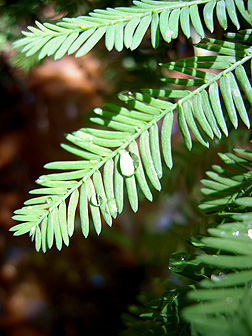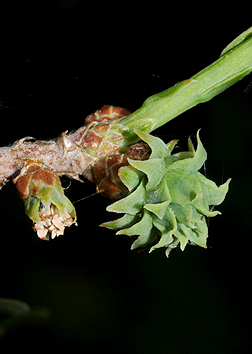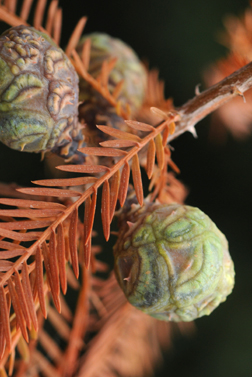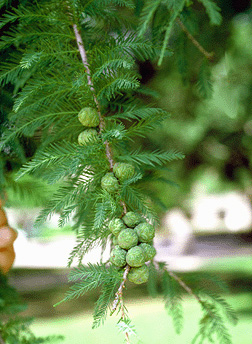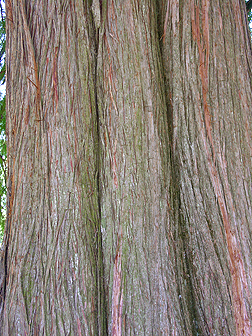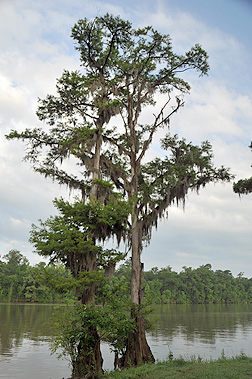 Virginia Tech Dendrology
Virginia Tech Dendrology
baldcypress Cupressaceae Taxodium
distichum (L.) Rich.
![]()
![]()
![]() symbol: TADI2
symbol: TADI2
Leaf: Linear and small, 1/4 to 3/4 inch long, generally appearing two-ranked. When growing on deciduous branchlets the leaf-deciduous branchlet structure resembles a feathery pinnately (or bi-pinnately) compound leaf; green to yellow-green.
Flower: Males in drooping, long panicles; females are subglobose, have peltate scales, and tend to occur near the end of branches.
Fruit: Cones are composed of peltate scales forming a woody, brown sphere with rough surfaces, 3/4 to 1 inch in diameter; cones disintegrate into irregular seeds.
Twig: May be deciduous or not; non-deciduous twigs are slender, alternate, brown, rough, with round buds near the end of the twig; deciduous twigs are two-ranked, resembling pinnately compound leaves.
Bark: Fibrous, red-brown but may be gray where exposed to the weather; old, thick bark may appear somewhat scaly.
Form: A large tree with a pyramid-shaped crown, cylindrical bole, fluted or buttressed base and often with knees.
Looks like: pondcypress
- dawn redwood
Additional Range Information: Taxodium distichum is native to North America. Range may be expanded by planting. Download the full-size PDF map.
More Information: Fall Color - Wood - Landowner Factsheet
External Links: USDAFS Silvics of North America - USDAFS FEIS Silvics - USDA Plants Database - Horticulture Information - USDAFS Forest Products Lab
All material 2025 Virginia Tech Dept. of Forest Resources and Environmental Conservation; Photos and text by: John Seiler, Edward Jensen, Alex Niemiera, and John Peterson; Silvics reprinted from Ag Handbook 654; range map source information
